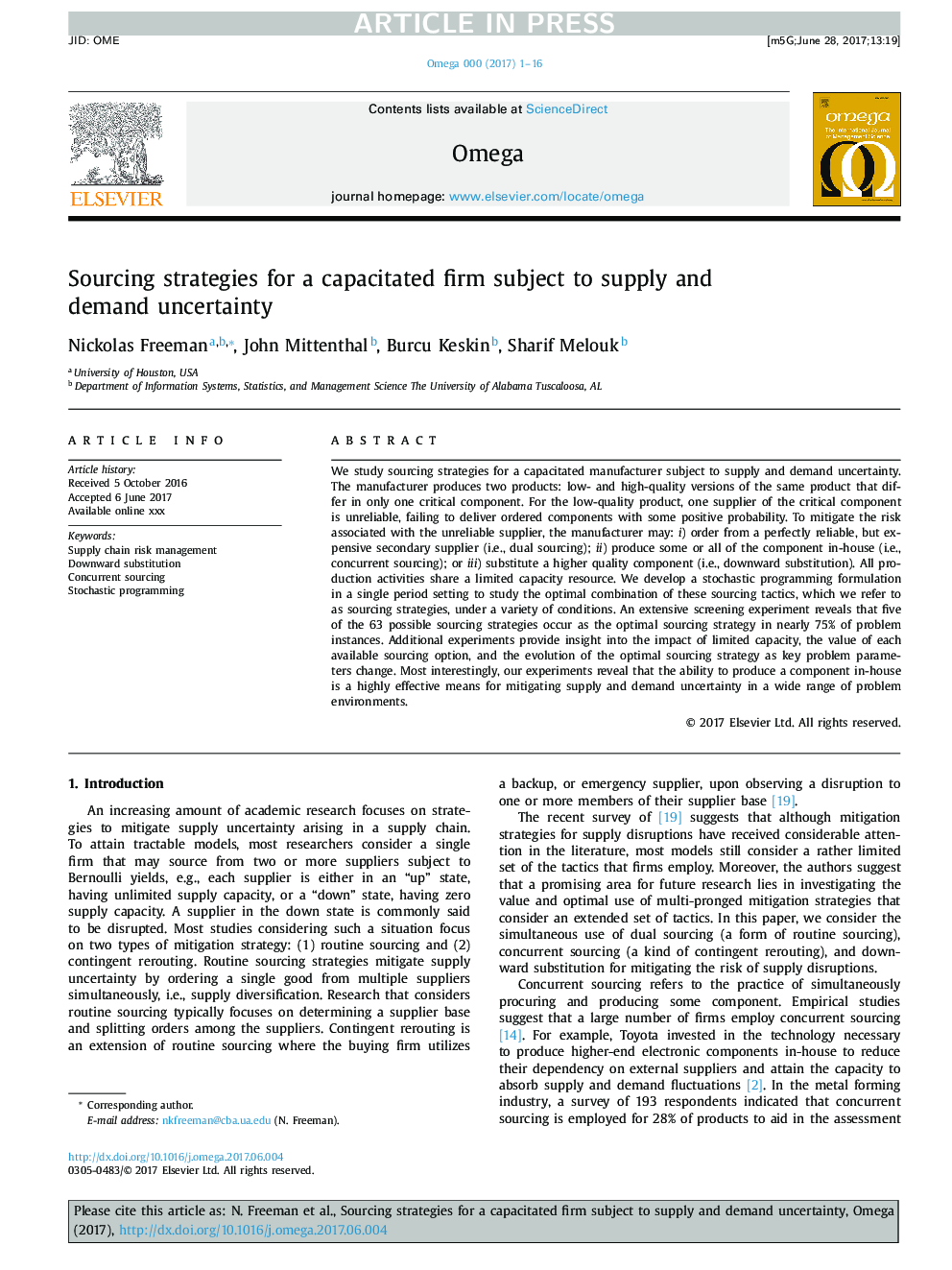| Article ID | Journal | Published Year | Pages | File Type |
|---|---|---|---|---|
| 7436670 | Omega | 2018 | 16 Pages |
Abstract
We study sourcing strategies for a capacitated manufacturer subject to supply and demand uncertainty. The manufacturer produces two products: low- and high-quality versions of the same product that differ in only one critical component. For the low-quality product, one supplier of the critical component is unreliable, failing to deliver ordered components with some positive probability. To mitigate the risk associated with the unreliable supplier, the manufacturer may: i) order from a perfectly reliable, but expensive secondary supplier (i.e., dual sourcing); ii) produce some or all of the component in-house (i.e., concurrent sourcing); or iii) substitute a higher quality component (i.e., downward substitution). All production activities share a limited capacity resource. We develop a stochastic programming formulation in a single period setting to study the optimal combination of these sourcing tactics, which we refer to as sourcing strategies, under a variety of conditions. An extensive screening experiment reveals that five of the 63 possible sourcing strategies occur as the optimal sourcing strategy in nearly 75% of problem instances. Additional experiments provide insight into the impact of limited capacity, the value of each available sourcing option, and the evolution of the optimal sourcing strategy as key problem parameters change. Most interestingly, our experiments reveal that the ability to produce a component in-house is a highly effective means for mitigating supply and demand uncertainty in a wide range of problem environments.
Related Topics
Social Sciences and Humanities
Business, Management and Accounting
Strategy and Management
Authors
Nickolas Freeman, John Mittenthal, Burcu Keskin, Sharif Melouk,
